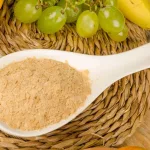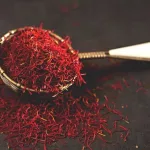Short answer: yes, lentil soup can be a friendly ally on your weight‑loss journey—especially when it’s part of a balanced, nutrient‑dense diet. Its high protein, generous fiber, and low‑calorie profile keep you full, boost your metabolism, and still taste amazing. Let’s dig into why this humble bowl works so well, how science backs it up, and how you can turn it into a tasty, repeatable habit.
Why It Helps
Protein power
Lentils pack about 9 g of protein per cup of cooked soup — roughly the same as a small chicken breast, but with far fewer calories. Protein is a magic ingredient for weight loss because it:
- Increases feelings of fullness, so you’re less likely to over‑eat later.
- Raises the thermic effect of food (your body burns extra calories digesting protein).
- Helps preserve lean muscle while you’re in a calorie deficit.
According to research, protein can boost metabolism by up to 30 % compared with carbs or fat.
Fiber fullness
One cup of a typical vegetable lentil soup delivers around 6 g of dietary fiber (Nutritionix). Fiber slows digestion, steadies blood‑sugar spikes, and keeps hunger at bay for hours—perfect for anyone who wants to skip the mid‑afternoon snack.
Low‑calorie count
A standard serving (about 250 ml) of lentil soup is only 140 kcal (Nutritionix). Even the richer black‑lentil version stays under 180 kcal per cup (SnapCalorie). Compare that to a creamy tomato bisque that can easily top 300 kcal per cup.
Nutrient density
Lentils bring iron, folate, magnesium, potassium, and antioxidants to the table. These micronutrients support energy production, heart health, and overall vitality—key factors that keep you motivated during a weight‑loss plan.
| Soup Type | Calories (per cup) | Protein (g) | Fiber (g) | Key Nutrients |
|---|---|---|---|---|
| Veggie Lentil Soup | 139 | 9.3 | 6 | Iron, potassium |
| Black Lentil Soup | 175 | 12 | 14.6 | Vitamin D, calcium |
| Creamy Tomato Soup | 310 | 5 | 3 | Vitamin A |
Science Behind It
Thermogenesis from protein
When you eat protein, your body uses extra energy to break it down—a process called thermogenesis. That means a few of those calories you ingest are actually burned right away. The same lentil‑rich bowl you enjoy for dinner can give you a modest metabolic boost before bedtime.
Fiber and glycemic control
Soluble fiber in lentils forms a gel‑like substance in your gut, slowing carbohydrate absorption. This steadier release of glucose keeps insulin levels from spiking, which reduces cravings for sugary snacks. A study in the Journal of Nutrition linked higher fiber intake with a 30 % lower risk of overeating later in the day.
Soup consumption & body weight
Epidemiological data show that people who regularly eat soup tend to have lower BMI scores. One large‑scale analysis cited by Healthline found that higher soup intake correlated with up to a 12 % reduction in obesity prevalence.
Complete amino‑acid profile
Lentils supply most essential amino acids but are slightly low in methionine and cysteine. Pair them with whole grains, nuts, or a splash of soy sauce, and you’ve got a complete protein combo that rivals meat.
Best Soup Recipe
Core “Weight‑Loss” recipe (high‑protein, fiber‑rich)
This recipe hits the sweet spot of taste, nutrition, and prep‑time. It makes about four servings—perfect for meal‑prepping.
- 1 cup dry green or brown lentils, rinsed
- 4 cups low‑sodium vegetable broth
- 1 medium carrot, diced
- 1 cup fresh spinach, roughly chopped
- ½ onion, finely chopped
- 2 cloves garlic, minced
- 1 tsp olive oil (optional, for sauté)
- ½ tsp cumin, ¼ tsp smoked paprika, pinch of black pepper
- Juice of ½ lemon (optional, brightens flavor)
Directions:
- Heat olive oil in a large pot, sauté onion and garlic until fragrant (about 2 minutes).
- Add carrots, cumin, and paprika; stir for another minute.
- Pour in the lentils and broth, bring to a boil, then simmer 20‑25 minutes until lentils are tender.
- Stir in spinach and lemon juice; cook 2 minutes more.
- For a creamier texture, blend half of the soup with an immersion blender, then return to pot.
Nutrition snapshot (per cup): 140 kcal, 9 g protein, 6 g fiber, 2.8 g fat, 130 mg sodium.
Black‑lentil version (extra fiber & iron)
Swap the green lentils for black lentils, add a pinch of cumin, coriander, and a dash of cayenne. The result is a darker, earthier bowl with 12 g protein and 14 g fiber per cup (SnapCalorie).
One‑pot winter comfort (yellow/moong dal)
For a quick, warming option, use 1 cup yellow moong dal, 1 cup mixed veggies (carrot, tomato, spinach), 1 tsp ghee, ginger, and garlic. Cook in a pressure cooker for 10 minutes; you’ll have a fragrant, protein‑packed stew that’s perfect for chilly evenings (Quora).
Meal‑prep guide
Divide the cooled soup into 4‑oz mason jars, seal, and store in the fridge for up to five days. Reheat in the microwave or on the stovetop, and you have a ready‑to‑go lunch that keeps you in control of portions.
Meal‑Plan Integration
Portion control
One cup of soup equals roughly 140 kcal. Pair it with a side of mixed greens (≈ 20 kcal) or a small whole‑grain roll (≈ 80 kcal) for a balanced 250‑300 kcal lunch—ideal for most weight‑loss diets.
Balancing macros
Aim for a daily macro split of 30 % protein, 40 % carbs, and 30 % fat. A bowl of lentil soup already supplies about 20 % of your daily protein target, so you can fill the rest of the day with lean meats, fish, or plant‑based proteins.
Combine with other proteins
Add a handful of roasted chickpeas, grilled chicken strips, or crumbled tofu to the soup for a complete amino‑acid profile. The extra protein keeps you satisfied for longer without blowing up the calorie count.
Timing & satiety
Studies show that starting a meal with soup reduces total caloric intake by up to 20 %. A warm bowl 15 minutes before your main course can trick your brain into thinking you’ve already eaten enough.
Low‑sodium hacks
Store‑bought broth can pack up to 1,300 mg of sodium per cup (Nutritionix). Make your own low‑salt broth or rinse canned lentils thoroughly to keep sodium in check.
Watch Out For
Undereating & nutrient gaps
Relying solely on soup may leave you short on healthy fats and certain vitamins. Toss in a drizzle of olive oil, a slice of avocado, or a sprinkle of nuts for those missing calories and nutrients.
High sodium risk
If you love the salty taste, use herbs (thyme, rosemary) and a splash of citrus instead of extra salt. This keeps the flavor bright while protecting your blood pressure.
Incomplete amino acids
Lentils are low in methionine. Pair them with grains like quinoa or brown rice a few times a week to round out your protein profile.
Digestive gas
Some folks experience bloating from legumes. Soaking lentils for 30 minutes, rinsing well, and adding ginger or fennel seeds can dramatically reduce discomfort.
Calorie over‑estimation
It’s easy to blow up the calorie count with too much oil, cheese, or croutons. Stick to 1 tsp of healthy fat per serving and limit high‑calorie toppings.
Conclusion
Whether you’re trimming a few pounds or simply looking for a wholesome, satisfying meal, lentil soup checks a lot of boxes: high protein, generous fiber, low calories, and a wealth of micronutrients. The key to success is balance—pair the soup with other protein sources, watch sodium, and keep portions in check. Try the core recipe, experiment with the black‑lentil or yellow‑dal twists, and see how the warm, comforting bowl fits into your daily routine.
Give it a go, then share your favorite tweak in the comments—maybe you add a dash of smoked paprika, or a handful of kale. Your experience could help someone else discover the joy of a simple, nutritious soup that fuels both body and soul. Happy cooking, and cheers to feeling lighter, healthier, and a little bit more cozy with every spoonful!


















Leave a Reply
You must be logged in to post a comment.